The decision by Twitter to label National Public Radio (NPR) as “state-affiliated media,” which it then changed to “government-funded media” after a barrage of criticism, underscores the need to rethink the role of major social media platforms as critical gatekeepers in the public sphere, the need for better labels for news media, and the importance of insulating these designations from political interference or mercurial interventions by billionaire founders.
When Twitter placed a state-affiliated media label on NPR last week, it put the award-winning public media outlet in the same category as Russia’s RT, the state-controlled international media network, and China’s Xinhua News Agency, providing fodder to partisans around the world who would happily denigrate public service media by equating it with state-owned media.
On April 12, NPR announced that it will no longer post on its 52 Twitter channels to protect its credibility, though its journalists are still able to use the platform for newsgathering.
Figuring out which news media are propaganda or arms of the states that fund them, and which ones provide a public service and are insulated from editorial interference by the government, has once again become a flashpoint in the debate over content moderation and discrimination on social media—not long after major social media platforms began instituting labels on some media accounts.
Sen. Ron Wyden (D-Ore.) called it “an insult to the notion of a free press to conflate an editorially independent nonprofit organization like NPR with state-controlled propaganda mills” in Russia and China. Meanwhile, Republicans, who have long pushed to defund NPR and object to its public interest mandate, cheered the new label.
In an apparent response to the outcry, Twitter established—at least for now—a new “government funded” label on both NPR and BBC accounts, despite the fact that less than two percent of their budgets come from public funds. This term is equally misleading, since many news outlets around the world receive government funding through subsidies, state advertising, and emergency relief during the pandemic.
In Canada, for example, the government has provided millions of dollars directly to media outlets through direct cash infusions and tax breaks. The U.S. and Europe support public interest media around the world through overseas development assistance, providing critical state funding to media working in challenging conditions around the world. In these and other examples, does that make them either state-affiliated or government-funded?
The terms state-controlled and government-funded raise questions about the utility of employing such blunt terms and not including information about how other news media are funded and operate. The selective application of labels to some news media and not others also raise concerns about perception and consistency.
All government-funded or state-affiliated media outlets are not created equal
Public media outlets, such as NPR, are editorially independent, provide transparency into their budgets, masthead, and editorial processes, and publish their standards and provide corrections when necessary. The fact that these outlets receive some funding from the U.S. federal government does not make them “state-affiliated” in the same sense as outlets like RT and Xinhua, which are fully state-funded and provide minimal transparency regarding either their operational or editorial processes. Media outlets like NPR and the BBC are better characterized as public interest and publicly funded media.
Efforts to categorize news media are not only about labels; they also impose restrictions on advertising, targeting, and algorithmic amplification. Twitter’s move to reclassify NPR directly impacts its reach, since Twitter’s policy states it “will not recommend or amplify” accounts that receive the state media label. Shadow banning tactics, which suppress the reach of a social media account without outright deactivating it, can also affect the visibility and monetization of their news content, with implications for news media sustainability. These results could happen despite the original intent of adding such labels, which is to provide social media users with additional information about the content they were seeing and create a signal that algorithmic systems could use to moderate content or enable certain features.
Content labeling harms independent media
Media outlets care about the label they get. Al Jazeera, which was originally labeled as funded by the Qatari government, lobbied successfully to persuade Facebook it was editorially independent and shouldn’t get a label. “The reason we object so forcefully is because for us, perception is reality in the world in which we live,” Michael Weaver, Al Jazeera’s Senior Vice President Business Development and Growth, Digital Division, told me at the time. “If we’re being undermined by other platforms, it spreads across not only what Al Jazeera is doing but it spreads across all these geopolitical conflicts that are happening in the area. It could be a death blow to the network.”
The risks of conflating editorially independent outlets with state-controlled propaganda mills not only detracts from the media and information literacy goals of such labeling, but also undermines the safety of journalists working for the outlet. Labeling independent public interest media as state-affiliated provides cover to authoritarian governments to designate those organizations and their journalists as foreign agents or spies, which could have significant implications for their safety.
In this sense, NPR’s decision to withdraw, at least partially, from using Twitter sends a principled message that will help insulate its reporters in the field from backlash. Ideally more media outlets, including the BBC, which now has the same label as NPR, would consider doing the same and break out of Twitter’s stranglehold on journalism. Unlike Google and Facebook, which form the backbone of the digital advertising and audience infrastructure upon which the news media rely, Twitter is a considerably more important platform for journalists, politicians, and other elite who believe it to be the digital public square.
Platform Convergence on Labeling
As mentioned, other major social media companies including Google, Meta, and TikTok label at least some state-affiliated media, although they all use a slightly different definition and terminology and impose different types of controls on their accounts.
Twitter opted for the term “state-affiliated” and applied the label to the accounts of media and their top editors, while Meta opted for the term “state-controlled” and excluded public service media.
Meta applies the label to media content and ads from outlets that are “wholly or partially under the editorial control of their government” and blocks them from advertising to US audiences.
Google’s YouTube includes labels on media content from outlets that are “funded in whole or in part” by a government or are “public broadcasters,” but not in the About section for a channel or search results. The designation “does not affect any of the features or monetization eligibility of the videos,” according to the company, and links to the outlet’s Wikipedia page.
TikTok uses the term state-controlled in its app and restricts those accounts from advertising, according to a spokesperson. It similarly relies on assessments of its experts and advisory council to determine whether an account shows evidence of state influence over editorial content and decision-making.
One challenge is that each of the platforms makes its own determinations based on its own relatively opaque assessments. In the case of the BBC, Twitter CEO Elon Musk tweeted his reasons for re-labeling the BBC, where he suggested that he didn’t “actually think the BBC is as biased as some other government-funded media, but it is silly of the BBC to claim zero influence,” implying that the labeling threshold is now simply how Musk feels about a certain outlet.
I’ve been consulted by several of these platforms over the years about their policies, which terms to use, and how to make decisions around content labeling and moderation. When platforms first introduced state media labels, I was the advocacy director at the Committee to Protect Journalists and wrote about the broader implications for press freedom, human rights, and democracy that their choices would have and how this could also provide cover for politicized attacks on media. I’ve also spent part of my career before academia with news outlets challenged by the complexity of government influence over media outlets.
State-affiliated is a better term since control is difficult to determine, funding sources are often opaque, and it allows for greater ambiguity about how much government interference is needed to undermine editorial independence. But even that is far from perfect.
There are plenty of media outlets that are privately owned, which still push propaganda and spread disinformation, and plenty of public-supported news media whose public interest orientation often results in criticism of the state and government. It would be preferable for platforms to focus on designations that are as objective and fact-based as possible, rather than subjectively determined in secret or on the whim of their owner.
The politics of labels
Deciding which news counts as independent journalism, and which media outlets are extensions of their political or financial backers, is not only difficult but ultimately political. A more nuanced approach is needed that considers the editorial independence of media outlets and assesses them on their merits, and which ideally takes these important decisions out of the hands of platforms or billionaires that control large swaths of the public sphere and the access that news media have to their audiences and advertisers.
In fact, it would be better if we could improve the labeling and algorithmic identification of all types of news media online. But making those determinations needs to be made independently from the platforms themselves. It could also help improve transparency in the media sector by requiring that news media provide information about their funding, editorial standards, and masthead.
Instead of haphazardly slapping labels on media while rescinding their verification, Twitter and its ilk should focus on ways to clearly distinguish news media agencies on their platforms and in their content moderation systems. They also should rely on a multistakeholder process that insulates these decisions from politics.
Luckily, the journalism profession has a plethora of professional groups, standards-setting bodies, and accreditation practices that could form the basis for a third-party assessment of what type of label a media organization should receive. This could be coupled with expertise from academic and practitioner communities that have created the resources that platforms use to make their proprietary designations, such as the State Media Monitor and the Media Ownership Monitor. These types of self-regulatory bodies and empirical research efforts have the expertise and legitimacy to categorize media appropriately and can help ensure that the labeling process is transparent and accountable.
As social media platforms continue to play a critical role in shaping public discourse, it’s crucial that they exercise transparency and consistency in their labeling decisions and draw on journalism industry bodies, rather than internal processes or personal biases, for these designations.
Google and Meta are general, unrestricted donors to the Brookings Institution. The findings, interpretations, and conclusions posted in this piece are solely those of the author and are not influenced by any donation.
The Brookings Institution is committed to quality, independence, and impact.
We are supported by a diverse array of funders. In line with our values and policies, each Brookings publication represents the sole views of its author(s).

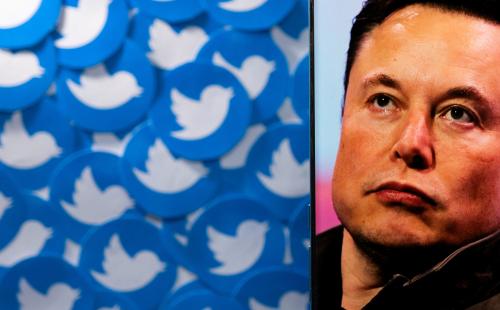
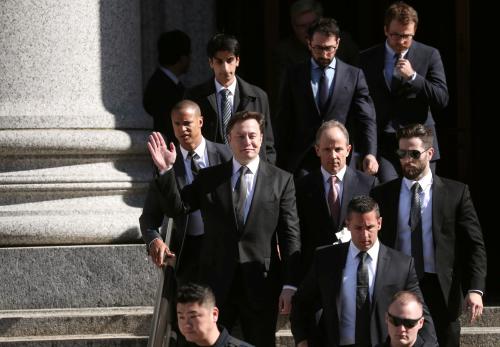
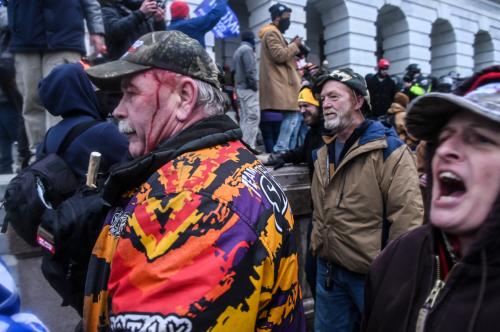

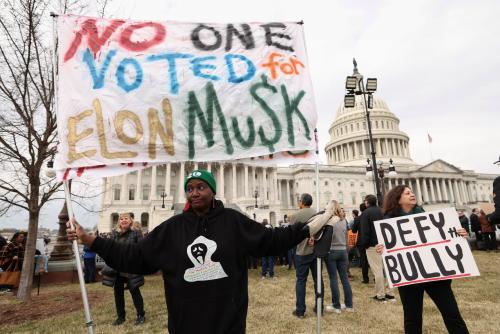
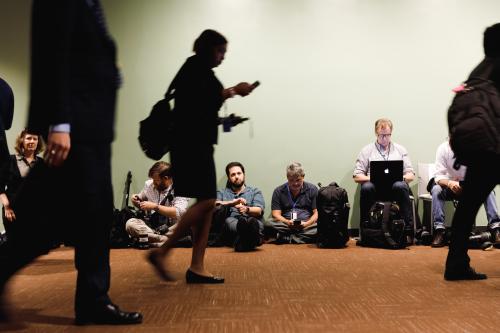

Commentary
Twitter’s NPR saga demonstrates the challenge of labeling media
Thursday, April 13, 2023